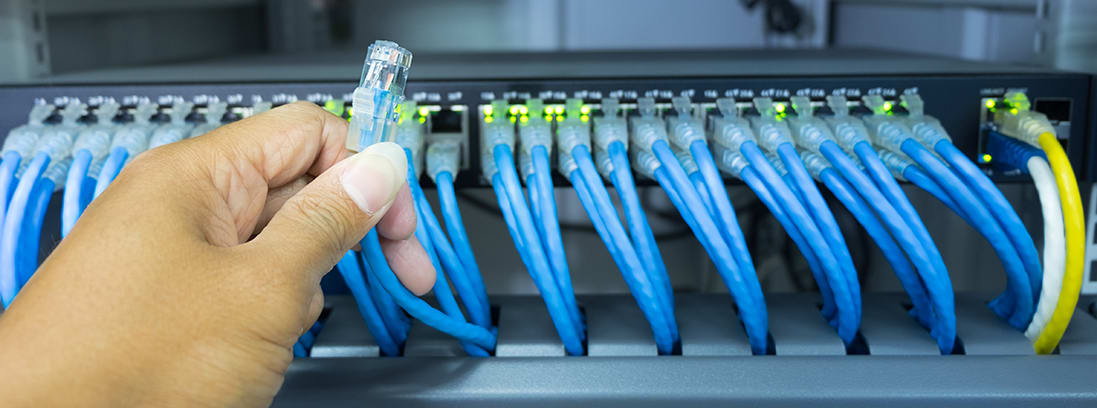Selecting wire and cable today can be a very different experience than in the past. More things are wired and connected than ever before. Wire and cable, depending on its application, was previously more of a commodity purchase. However, Industry 4.0, increased automation, and the criticality of a well-wired facility magnify the importance of wire and cable selection.
Often, data is referred to as the “new currency.” Attaining data in the industrial context comes from machines, equipment, and their operations. The connectivity comes from equipment that is dispersed and sometimes operates in harsh environments. Such equipment also transmits logged data, incrementally to a sometimes-remote platform via the Internet of Things (IoT). This higher flux of data volume draws attention to distinctive characteristics of cable quality that buyers demand, and manufacturers provide.
Wire and Cable Selection Trends

Bert Johnston is a product marketing specialist with RS. Johnston’s focus is wire and cabling products, and he says there are a few overarching trends in wire and cabling selection that buyers want in today’s environment.
At the forefront of characteristics buyers ask about are ratings that have to do with interference. “With industrial automation and data transformation there’s lots of data being transmitted nowadays,” says Johnston. “One of the big pain points that a customer has is electromagnetic interference (EMI) and radio frequency interference (RFI). It’s signaling interruptions, false readings and compromised electrical conformance that EMI and RFI protection characteristics help prevent. Customers are going to more shielded type cables that cut down on the “noise” of cable when it is trying to transmit data. “
Johnston says manufacturers are aware of this and put much thought into their designs to reduce both EMI and RFI. By so doing, it helps satisfy buyer demand. With low noise signatures of cabling and wire, signals are best transmitted to help the efficacy of remote monitoring and accurate data transmission.
Durability
The next notable trend in wire and cable characteristics buyers are concerned with is durability of the cable. Johnston cites the unseasonable weather in Texas, when a significant winter storm in the state tested the many miles of wiring and cabling that was specified and installed in environments that never expected such cold and foul weather. In addition, more equipment in remote and harsh environments are being wired and must operate in environments that can be unpredictable: wildfires in the Pacific Northwest; snowstorms in the Southwest; equipment that was once located in a remote location where a human would periodically check on the equipment or machine in lieu of wired automation.
“The insulation and the shielding that goes around the inner wires, and the outer jacket of the cabling bundle are important attributes,” explains Johnston. “People are looking for more and more cable that can handle harsh environments and applications like those in the oil and gas industry for example,” Johnston noted that during the winter storms in Texas, there were failures in power plants due to the physical failure of components not rated for use used in those conditions.
Flexibility and Size
One more emergent trend that Johnston sees is cable flexibility and size. This refers to its physical versatility and endure motion and the size of the physical conductor. Ideally, the conductor within the wiring and cable should be able to deliver the signal. Lighter and smaller material provides an advantage to the larger equipment and design, it is a part of.
“Wires are getting smaller, which makes for more flexibility,” Johnston says. “Much multi-conductor cable in today’s environment goes to smaller cable. You are able to put more wire into a machine and route it into tighter areas when it’s smaller and more flexible.”
Attenuation
Another term that comes up, says Johnston, is attenuation. Attenuation in an electrical system refers to the reduction in the amplitude or strength of a signal, as it passes along its length. Attenuation results when there’s resistance in the conductor and any losses that may result from long cable runs. It is a concern addressed by manufacturers, as it influences the quality and suitability of the wiring or cable for a specific application.
Johnston says attenuation is often a discussion that takes place between a manufacturer’s engineering staff and the buyer’s engineering staff. New requirements and specifications for replacement wire and cable, as well as new manufacturing, may call for more stringent attenuation specifications. While always important, it is more at the forefront of characteristics of wiring and cabling than in the past.

Total Cost of Ownership
Aside from the specific characteristics of wiring and cabling to meet the needs of buyers, Johnston emphasizes the importance of how we view the cost of cabling. Cabling, like many industrial commodities, have a price, but he recommends that buyers avoid thinking strictly of the product in the context of its price. Instead, view it with the total cost of ownership in mind.
Low-priced cable can be priced low for a reason. It may be manufactured with certain materials, in a way that allows it to be reduced price, however, the product may not be suitable to the demands of the environment in which it operates. If it is not, the product is inferior and the price that seems low results in a higher cost to the owner. The wiring and cabling could cause premature failure, interruption, and other catastrophic events incurring costs that far exceed the low upfront price. In this sense, it is important to consider the environment the cabling will work within, the demands placed upon it, and the total cost of ownership associated with such factors.
Collaboration
Johnston also stresses the importance of collaborating in discussion with your distributor. Distributors help in assisting buyers in cross-comparing product numbers from different manufacturers and in finding comparable products.
In addition, the distributors can refer buyers to manufacturers to arrive at the correct product and characteristics. Distributors are also a pathway to major wire and cable manufacturers when questions and concerns may arise. In these instances, collaboration is key and can result in the best outcomes.
Preparing for Future Wire and Cable Requirements
Today, there are concerns with wire and cabling that were not as problematic in the past. These include signal noise, flexibility, durability, size, and attenuation. With Industry 4.0 and IoT, wire and cable used is a differentiator in automation systems. In addition, buyers should be shrewd in their collaboration with distributors working with them to address product attribute concerns, as well as supply logistics such as lead times and optimal order quantities. Finally, it is important to think of total cost of ownership versus price alone.
Together, these wire and cable considerations will put today’s buyer in the best place to procure the right products for the applications that help achieve the outcomes aligning with their organization’s goals and objectives.
Additional Links:







